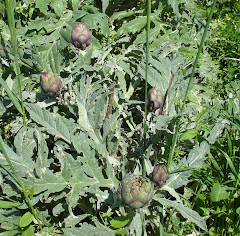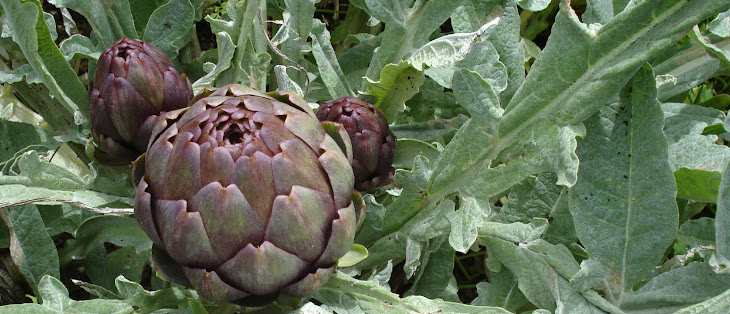 We've been eating tomatoes every day for weeks now, but yesterday was the first time we picked a basket full, enough to bottle. Everything seems to be about two weeks later than last year after the cold spring, but yesterday we found 5 kilos of tomatoes were ripe, with about the same again which will be ready in a couple of days' time. So it was time to start bottling.
We've been eating tomatoes every day for weeks now, but yesterday was the first time we picked a basket full, enough to bottle. Everything seems to be about two weeks later than last year after the cold spring, but yesterday we found 5 kilos of tomatoes were ripe, with about the same again which will be ready in a couple of days' time. So it was time to start bottling.Last year we tried many different ways of preserving our tomatoes, ending up with more than 50 jars so that we didn't buy tomatoes at all, eating our own all through the winter. This time we tried yet another method:

Roughly chop the tomatoes and remove the stems and tough centres.
Put them in a large saucepan, bring to the boil and simmer until the skins start to come off.
Put the tomato pulp through a mouli legumes until all that is left in the mouli is dryish skin.
Simmer the pulp and juice until it has reduced by half. Bottle in jars which have been sterilised by placing in an oven at 140 degrees C for 10 minutes. Gently pour a little olive oil over the top of the pulp before putting the lid on. This passata can be used in sauces and dishes which require heating. I think it is safer not to eat it without reheating. It certainly keeps well for nearly a year as we have only just finished our jars of last year's tomatoes.

I had thought that this 'mouli' method would be easier than peeling the tomatoes before cooking, but I'm not sure that it does save time or effort. Next time we'll try peeling them as we did last year.
 In the garden at lunchtime we at our first melon:
In the garden at lunchtime we at our first melon:


















































